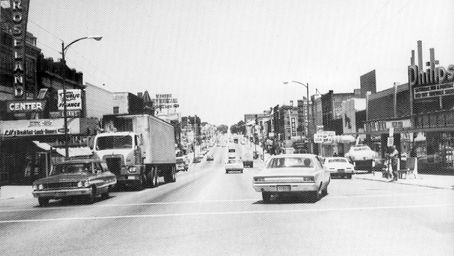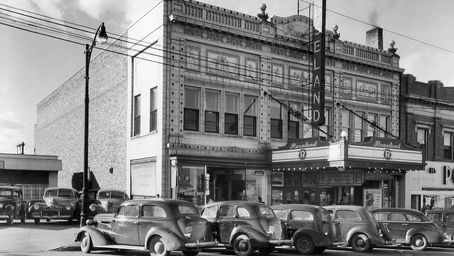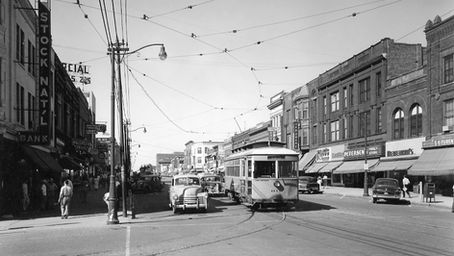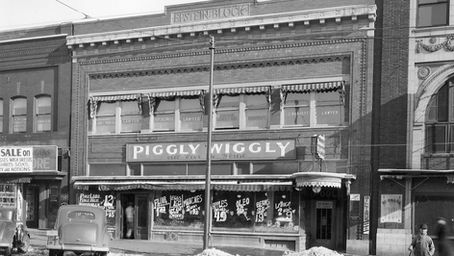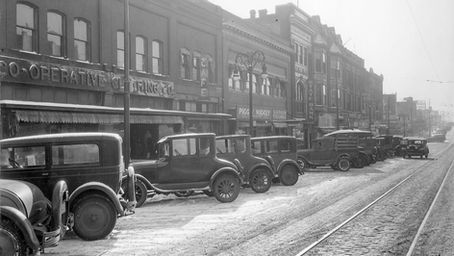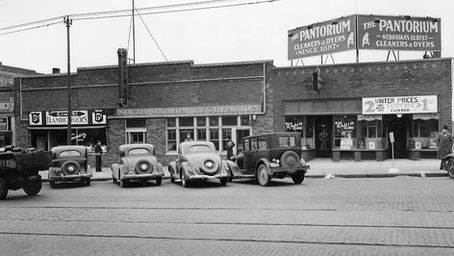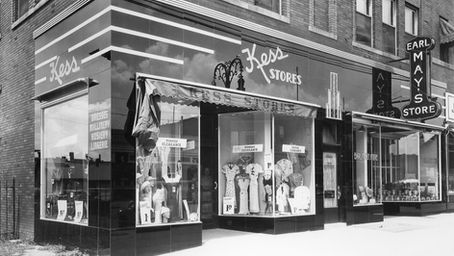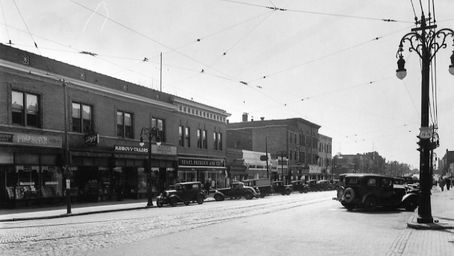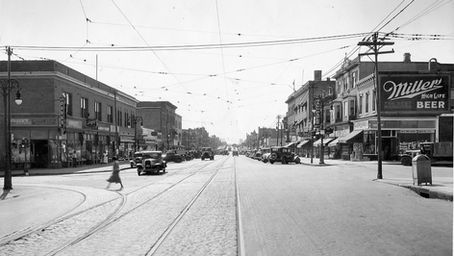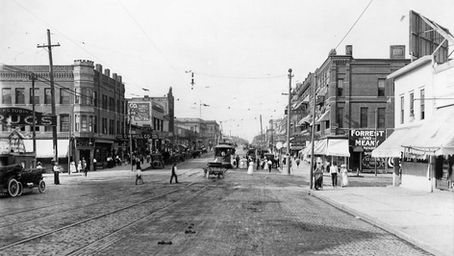
THE MAGIC
CITY
THE BECOMING OF SOUTH OMAHA.

1914 | Looking north on 24th St. from N St.

1948 | Roseland Theatre at 4934 So. 24th St.

1967 | Looking north on 24th St from O St.
The creation of South Omaha was in many ways a perfect storm. As American’s need for packaged meat exploded after the Civil War, the area south of Omaha offered the food, water, and space necessary for the development of a meatpacking center.
In 1882 capital, entrepreneurship, and labor poured into the area. Which created a settlement christened the ‘Magic City’ due to its almost miraculous growth. By 1892 the city of South Omaha prospered with a stockyard and packinghouses. Immigrants from around the world crowded into South Omaha and formed the majority of its labor force.
Nationality, ethnic identity, and customs flourished in a compact area as groups celebrated their successful journey and economic gain. Each neighborhood had their stores, taverns, and churches; but the identity of South Omaha was created around the areas of the packinghouses and the stockyards. The groups interacted depending upon each other to accomplish the strenuous work requested in a meatpacking center.
This interaction reached its zenith in the 1930s, 40s, and 50s, when labor unions were integrated and the need for labor was at an all-time high. Omaha became the world’s largest meat packing center in 1955. Ethnic music, food, similar folklore, customs, and working-class heroes all bended into the circumstance known as South Omaha. Festivals, galas, and wedding became celebrations, not of individual groups, but of South Omaha in general, as the different people bonded with the pride of their hard work and endurance.
One would hear Spanish, Polish, Irish, and German music at the same event and would dine on recipes from Lithuania, Croatia, and the south, (courtesy of African Americans.)
There is an old saying in South Omaha that goes like this,” the manure storms are so bad down here that the yellow dust covers everything including the people so we don’t know where they came from or what they look like and by the time it rained we liked them too much to care.” Group’s strived to keep their ethnic identity alive while cohabitating with others and this created a unique and dynamic place. Growing up there I later would come to see South Omaha as a Federico Fellini film stepping out from under the cruelty and danger of the meat packing industry and into a circus of ethnic fete with each group contributing to the festivity and each enjoying the uniqueness that was created. As Albert Camus stated, “throughout my life I have tirelessly sought to connect with the Spanish in me, which seems to me to be the true me.” One could substitute Spanish with the words South Omaha and the same would be true.
1990 - NOW.
In the 1990s, historic South 24th Street was revitalized by Latino families that started businesses and again worked at the packing-houses. Nebraska was ranked #10 in the country for the largest Hispanic growth and in 2002, the South Omaha Business Association, under the leadership of John Barrientos, redeveloped 24th street with planters, lights and a new look to the corridor.
By 2015 the Cinco de Mayo festival, a traditional Mexican event in South Omaha, went on to be Omaha’s largest local event and one of the biggest in the Midwest.

2000 | Cinco de Mayo Parade on 24th Street.

2005 | Cinco de Mayo Parade
In 2020, South Omaha celebrated 100 years of Mexican festivals that stretches a seven-block area and attracts hundreds of thousands of people every year.
Finally in 2021, the South Omaha Business District, that was spearheaded by David Catalan, came to reality. He and other leaders took pride in keeping the historic South 24th Street maintained and vibrant.

2021 | Cinco de May | Photo by Jim O'Keefeo

